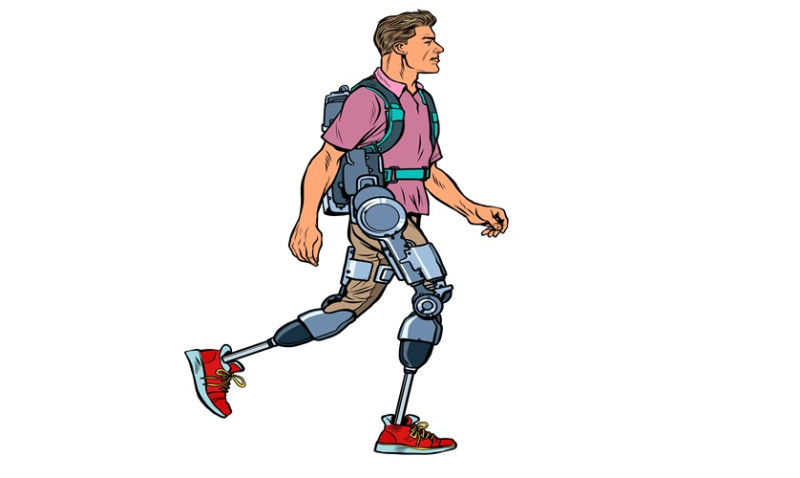
Manual therapy is a hands-on approach to pain relief and musculoskeletal rehabilitation. It encompasses a variety of specialised techniques performed by trained therapists to reduce pain, improve range of motion, and restore balance in the body. But how exactly does manual therapy work? What happens inside the body during treatment? Whether you're a fitness-savvy DIY enthusiast, an interior designer managing work-related stress, or a tradesperson dealing with physical strain, understanding how manual therapy functions can help you decide if it’s right for your body and your lifestyle.
What Is Manual Therapy?
Manual therapy, sometimes referred to as manipulative therapy, involves the use of skilled, hands-on techniques that mobilise joints, manipulate soft tissues, and target muscle imbalances. Unlike machine-based or passive treatments, manual therapy relies on the therapist’s ability to assess and respond to the body’s unique responses and restrictions.
This practice includes joint mobilisations, manipulations (commonly known as spinal adjustments), trigger point therapy, and soft tissue massage. If you’ve ever been to a physiotherapist, osteopath, or chiropractor, chances are you’ve already experienced some form of manual therapy.
Manual therapy doesn’t just treat symptoms. When done correctly, it targets the underlying causes of dysfunction—whether that’s a twisted posture from long architectural drafting sessions or tight, fatigued muscles from lifting and sanding hardwood floors all day.
Because it addresses both the mechanical and neurological aspects of pain and movement, manual therapy remains a cornerstone of modern rehabilitation and performance enhancement strategies.
Mechanical Effects of Manual Therapy
One of the key ways manual therapy works is through its mechanical effects on the musculoskeletal system. In other words, it physically changes what’s going on in your joints, muscles, and connective tissues.
Joint mobilisation techniques, for example, aim to restore normal motion in stiff or misaligned joints. Whether you've been sitting for hours designing blueprints or working overhead in construction, repetitive strain and poor posture can lead to joint restrictions. Manual therapy can correct these restrictions and restore fluid, pain-free movement.
Soft tissue techniques target muscles and fascia—the network of connective tissue surrounding muscles. Fascia can become tight or stuck, leading to pain and limited mobility. Manual therapy breaks down adhesions (commonly known as “knots”) and increases blood flow to the area, speeding up healing and restoring muscle function.
Even something as simple as applying pressure with the hands can stretch shortened muscles, decompress joints, and create space in irritated nerve pathways, making manual therapy a powerful tool against chronic conditions such as sciatica or shoulder impingement.
Neurological Mechanisms and Pain Modulation
Beyond the physical adjustments, manual therapy also has significant neurological effects. This means it influences how your brain and nervous system process pain and movement.
When a therapist applies pressure or moves a joint, sensory receptors in your muscles and skin send signals to your central nervous system. This can "reset" dysfunctional pain patterns and reduce your body's sensitivity to pain.
This phenomenon is called pain modulation—essentially, the therapist is helping your brain to perceive less pain. It's especially beneficial for people living with chronic or recurring pain, which often results from overly sensitive nerves rather than persisting tissue damage.
Manual therapy also stimulates the parasympathetic nervous system—the part of your body responsible for rest and recovery. This can result in decreased stress, improved sleep, and an overall sense of well-being. Ideal for those juggling mentally demanding projects like home renovations or architectural planning.
By restoring clear communication between the body and the brain, manual therapy not only helps manage pain but also improves movement coordination and injury prevention—crucial benefits for both the active hobbyist and the seasoned tradesperson.
Physiological and Systemic Benefits
Manual therapy doesn’t just offer relief where it hurts; it has systemic effects that contribute to overall bodily health. Improved circulation is one such benefit. By manipulating soft tissues, therapists encourage blood and lymph to flow more freely through the body. This accelerates healing by delivering nutrients and removing waste products at a faster rate.
Increased lymphatic drainage is particularly beneficial for inflammation and swelling, common issues for those who regularly use tools, kneel for long hours, or handle heavy materials. Improved lymphatic flow helps clear fluid build-up and reduces pressure in sore or injured areas.
Another advantage lies in the flexibility and elasticity of muscles and fascia. Manual therapy can help relieve tight hip flexors from prolonged sitting or release a locked-up shoulder from overuse in trades like plastering or carpentry.
Some evidence suggests that manual therapy can even enhance immune response over time by decreasing cortisol levels (the body’s stress hormone) and enhancing parasympathetic tone. That means it may help your entire system operate more efficiently, which is especially valuable during physically or mentally demanding periods—like moving house or finalising design projects.
Manual Therapy Techniques: A Quick Overview
| Technique | Description | Common Uses |
|---|---|---|
| Joint Mobilisation | Gentle oscillations to restore movement to stiff joints | Neck stiffness, frozen shoulder, after immobilisation |
| Manipulation | High velocity thrusts often accompanied by a ‘crack’ | Lower back pain, spinal alignment, tension headaches |
| Myofascial Release | Slow, intentional pressure on fascia to improve mobility | Postural issues, chronic tightness, mobility limitations |
| Trigger Point Therapy | Pressure applied to knots or hypersensitive muscle points | Neck pain, tension headaches, muscle strains |
| Soft Tissue Massage | Kneading and stretching of muscles for relaxation and recovery | Post-workout recovery, workplace tension, stress relief |
Is Manual Therapy Right for You?
If you spend your day using power tools, standing on ladders, redesigning client spaces, or even just working from home in a less-than-perfect chair—manual therapy could be a valuable addition to your health routine. It works for more than just acute pain; it’s also preventative maintenance for your joints and muscles.
You don’t need to be injured or in severe pain to benefit. Many people include manual therapy as part of their wellness strategy to maintain optimal posture, reduce stress, and avoid injury down the line. Think of it like tuning your car—regular sessions keep your body performing at its best.
Not sure where to start? Seek a qualified physiotherapist, osteopath, or chiropractor registered in the UK. They’ll assess your specific needs, ask about your work and daily habits, and personalise the treatment plan to suit your lifestyle—whether that’s balancing site work, creative deadlines, or home renovation goals.
Manual therapy isn’t magic, but when blended with movement, awareness, and proper ergonomics, it becomes a key ingredient in long-term physical wellness—helping you keep doing what you love, without the aches and pains holding you back.
Conclusion
From mechanical alignment to neurological recalibration, manual therapy offers a well-rounded, hands-on solution to a wide range of physical issues. Whether you're sanding down a timber feature wall, sketching out your next architectural masterpiece, or just trying to stay pain-free at your desk—understanding how manual therapy works gives you the tools to make informed decisions about your health and daily performance. It’s not just about short-term relief; it’s about unlocking your full potential by treating the body as a whole.





